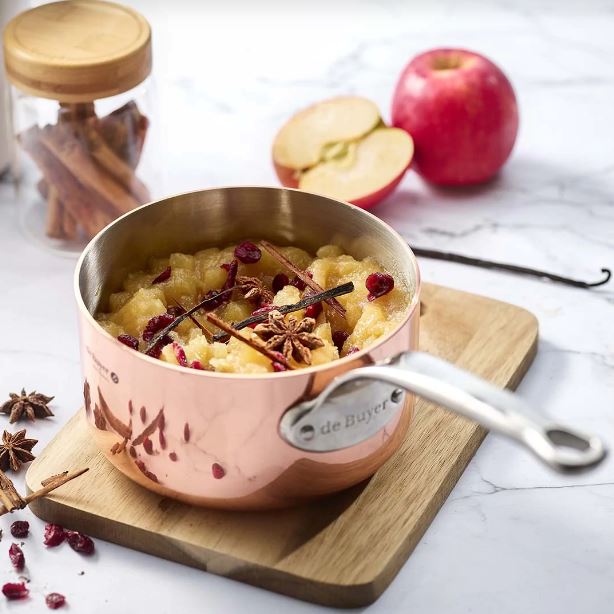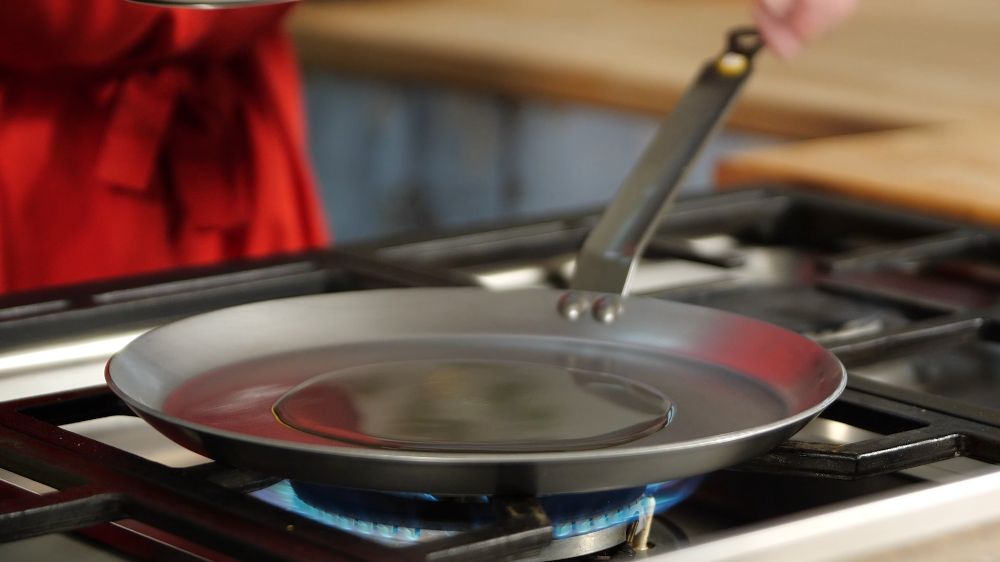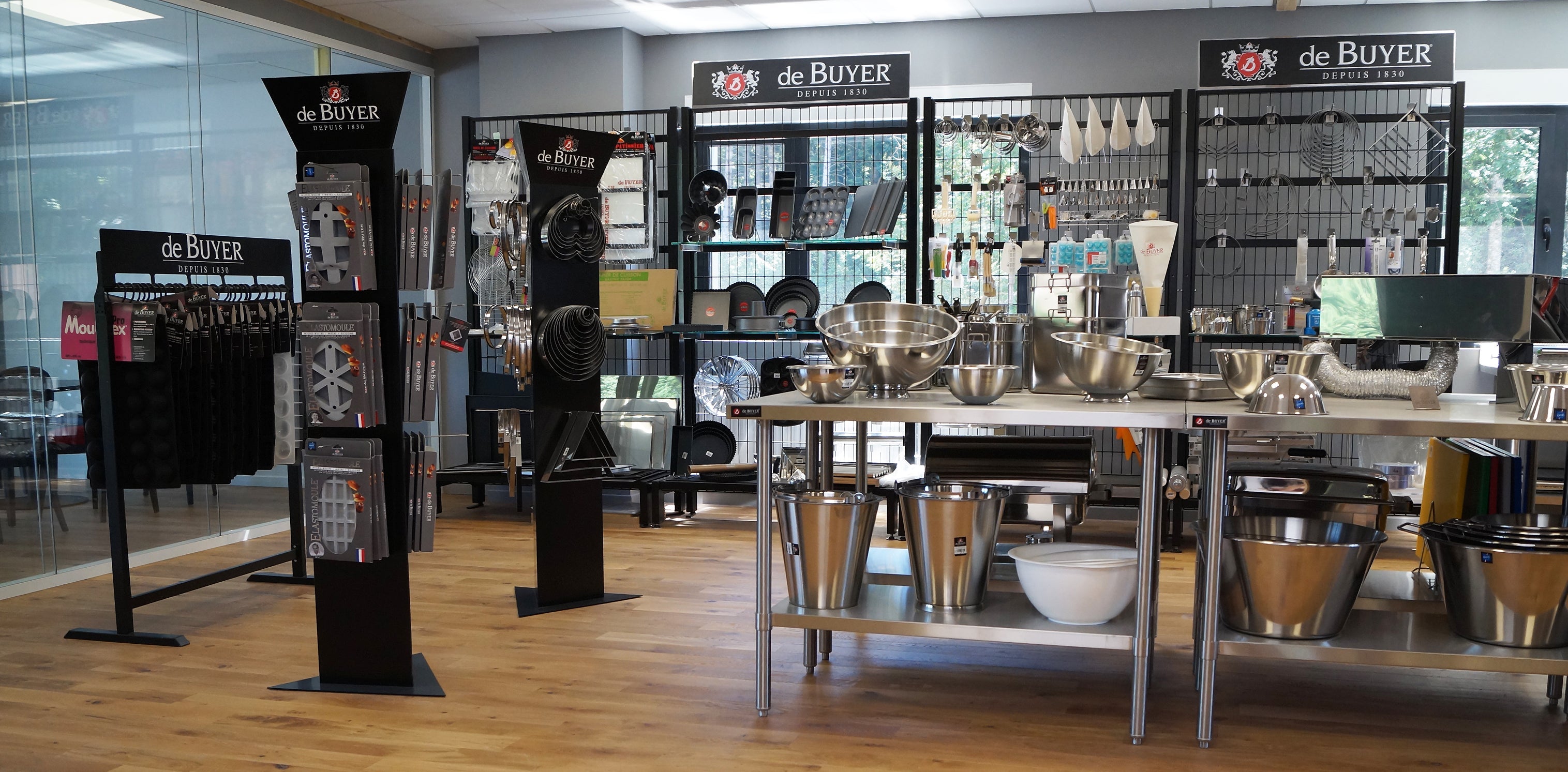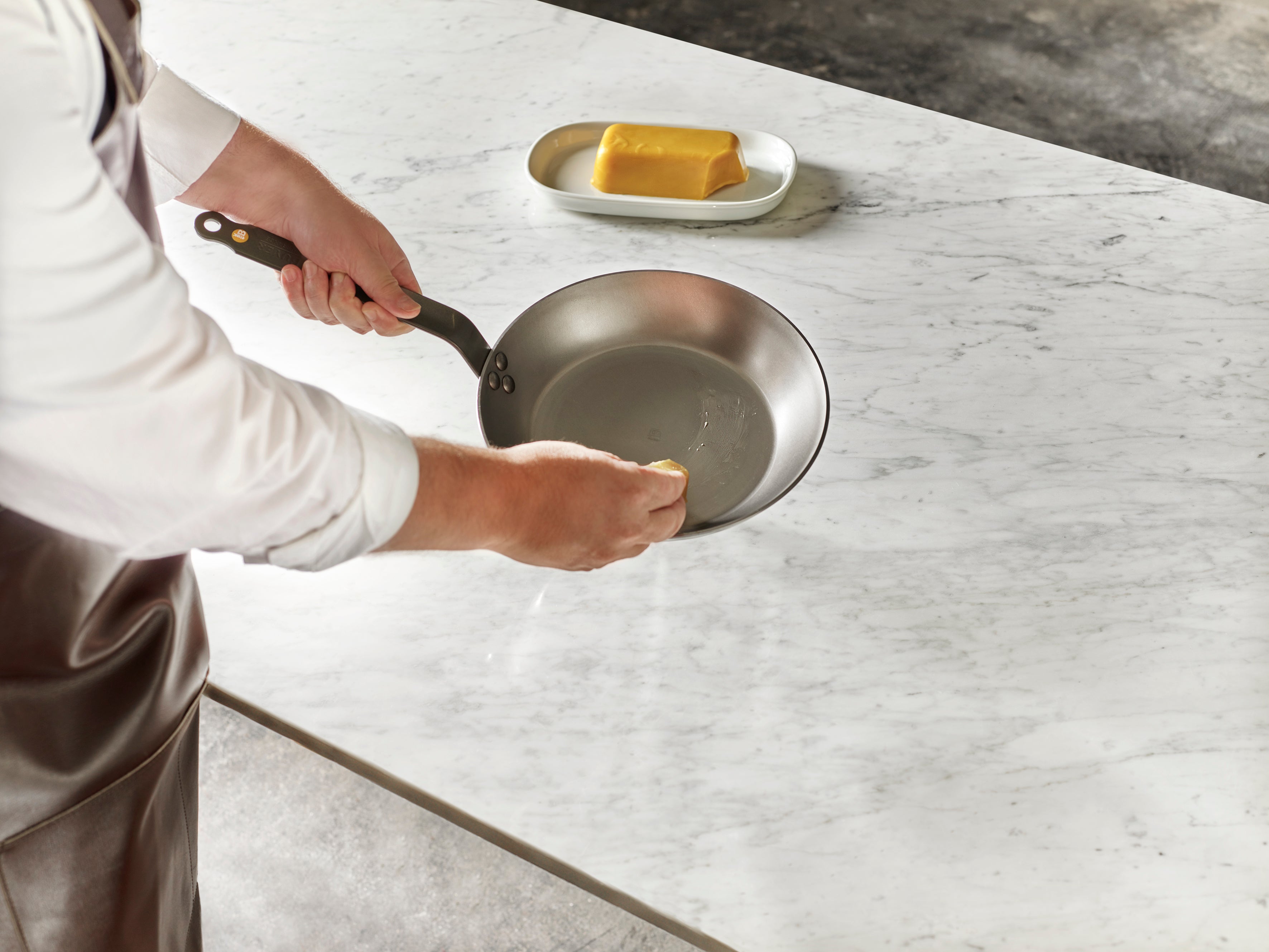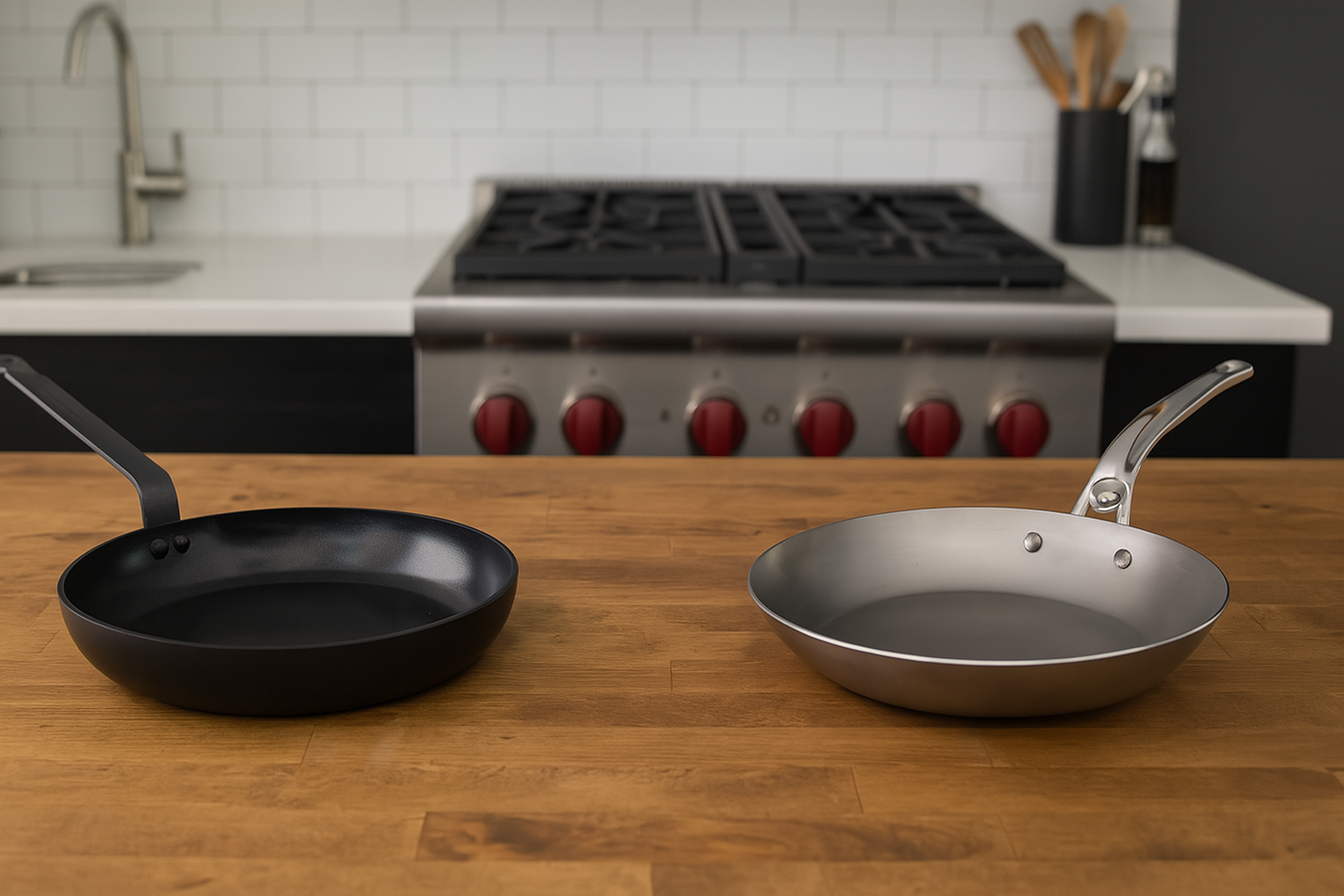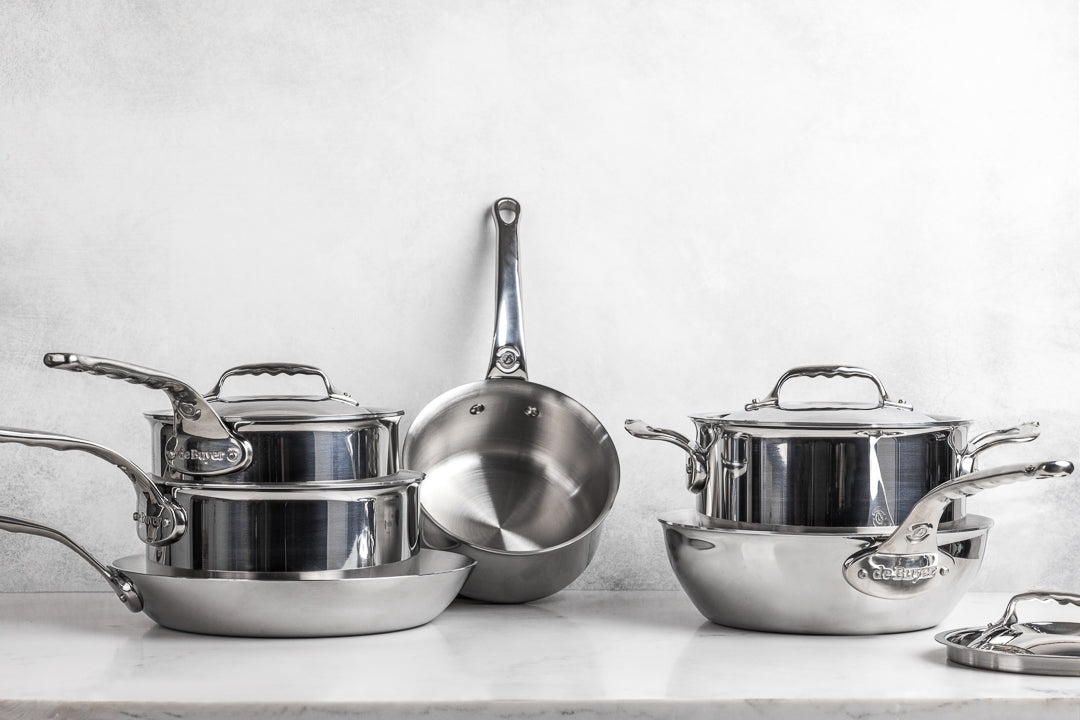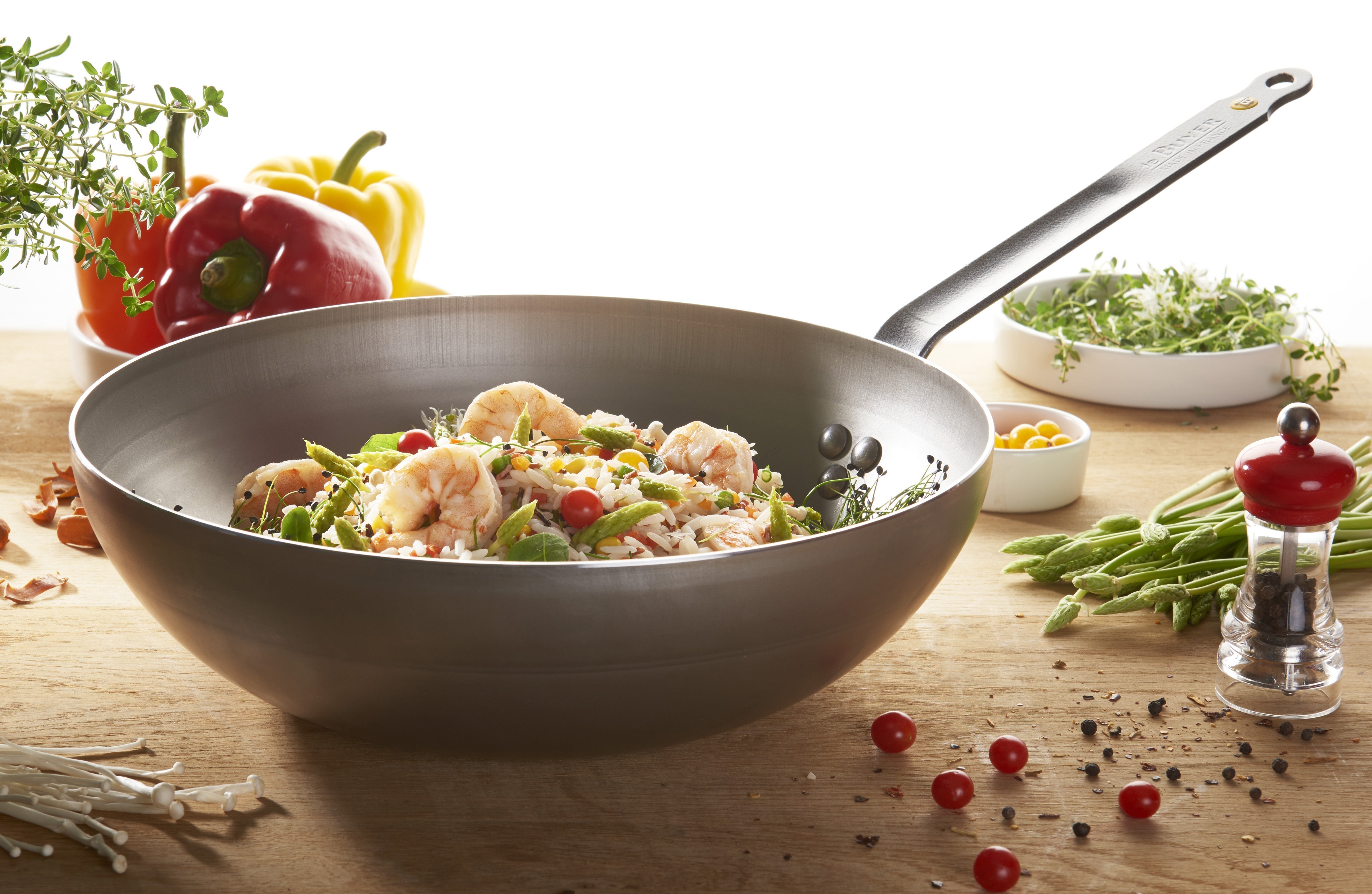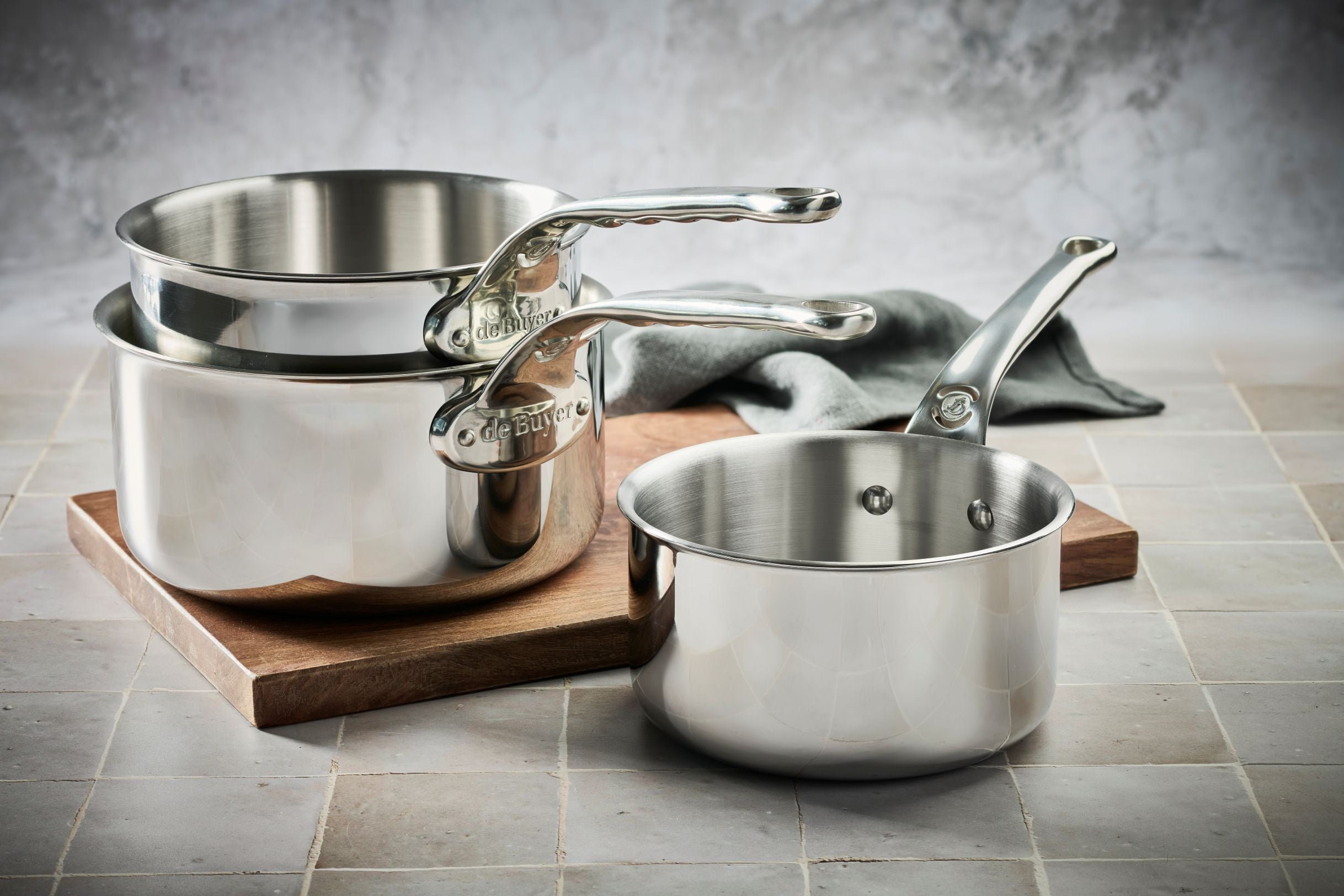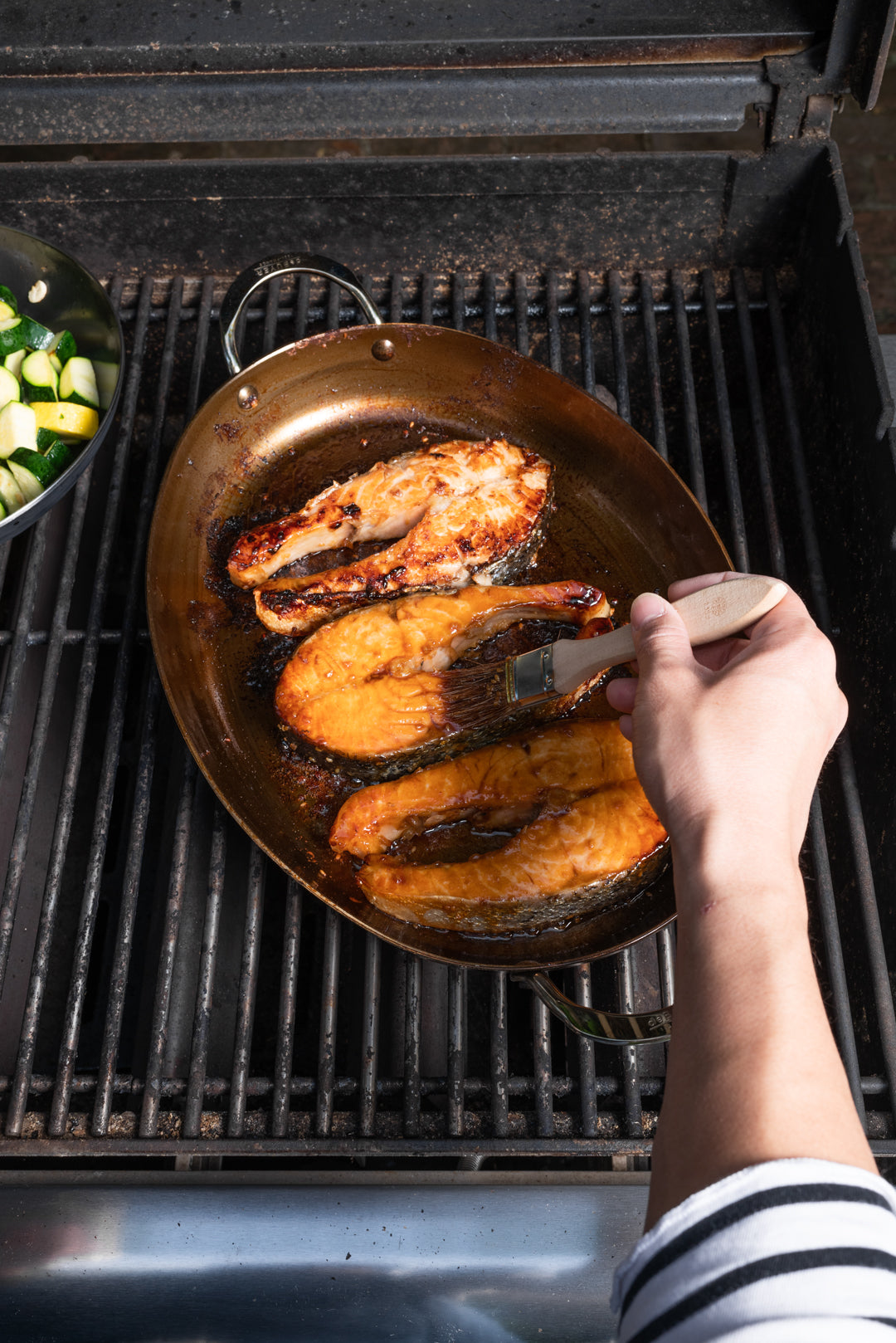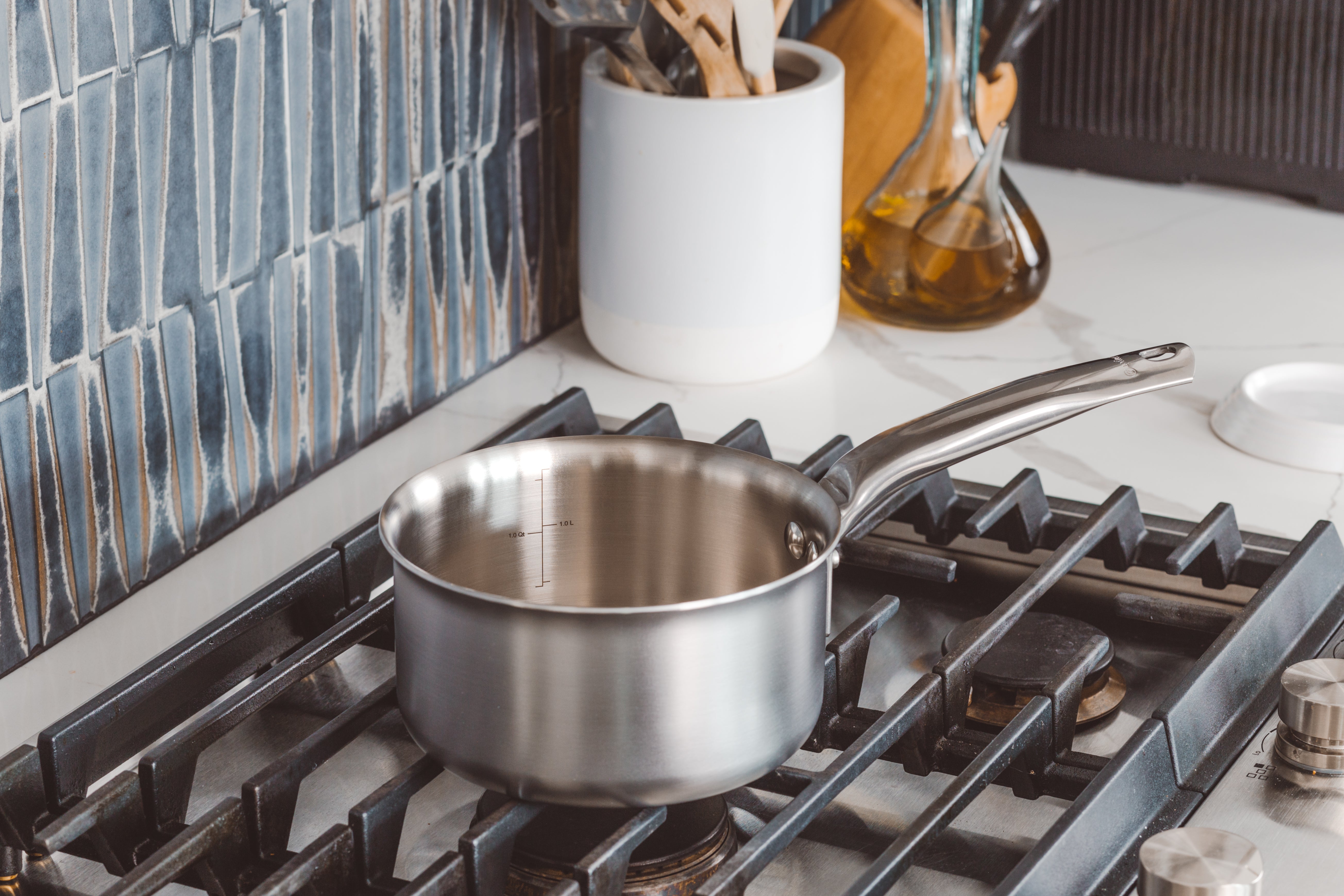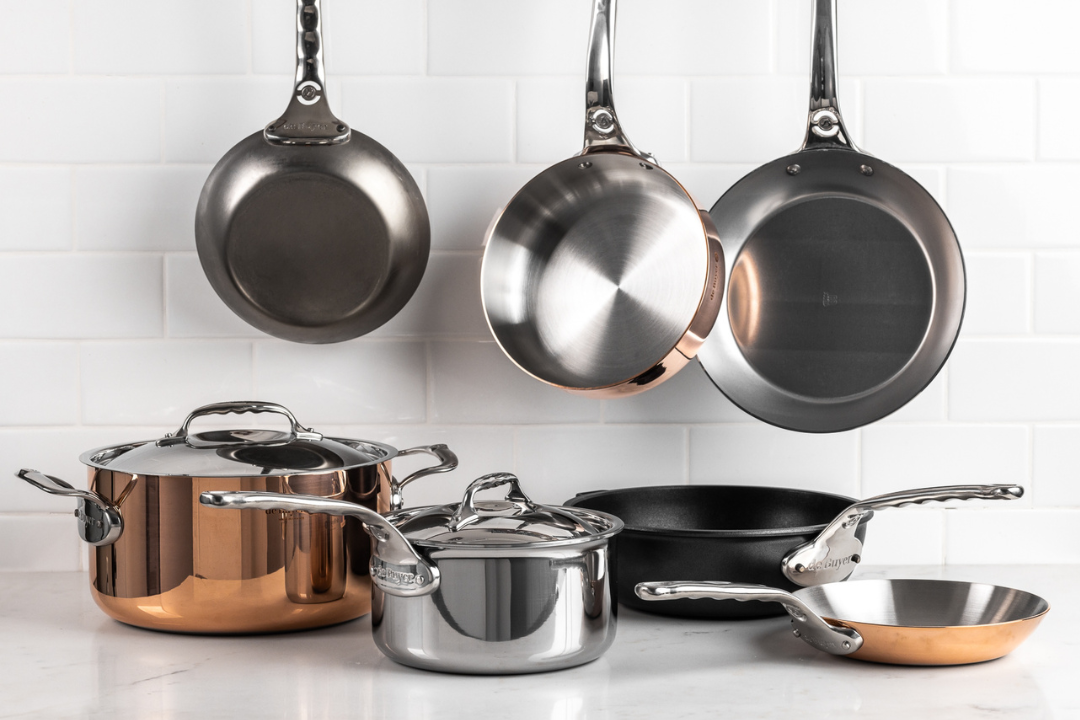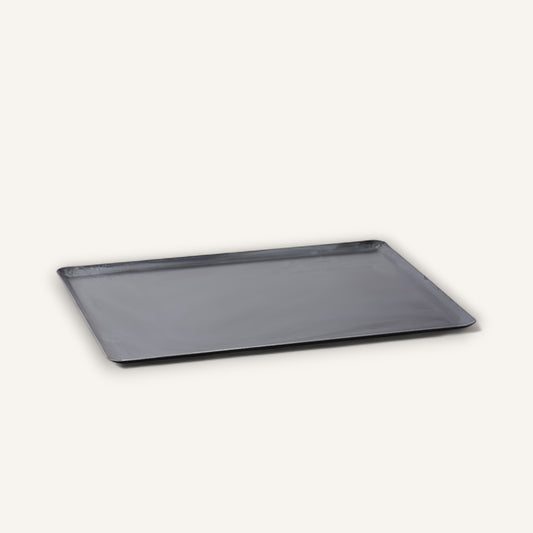Copper cookware has been around for a very long time. Specifically, there is evidence it was used in the Middle East over 10,000 years ago. Copper replaced stone as the preferred cooking material due to its malleable nature. It also appears that copper was used for cooking in ancient civilizations such as Egypt and Mesopotamia. Strong culinary traditions which utilize this coveted material are Spanish paella pans and Indian kadhais.
So the answer to whether or not copper is safe for cooking is a resounding yes. Copper cookware has been long-sought by chefs for its flexibility and stunning appearance. Ten times more conductive than stainless steel and two times more conductive than aluminum, copper is an ideal choice for preparing foods that demand exact temperature control and steady, even heat. Yet copper cookware does have its shortcomings including higher costs and meticulous care. Let’s take a closer look at this timeless material and determine if it is right for you.
Image Source
Related link: Cookware Materials Guide
How to Be Safe With Copper Cookware
If being used with heat, copper cookware is usually lined. This prevents the material from breaking down and triggering a chemical reaction with foods, especially acidic ones. You want to avoid this material from seeping into your food as consuming too much copper can lead to health concerns. Please do not let this scare you away from modern copper cookware which has been designed to prevent these issues! This is achieved with a non-reactive lining of another metal such as tin, stainless steel, or nickel. One can prepare anything in these pots and pans while being assured food will be safe. Unlined copper cookware is a joy to use in the form of mixing bowls and preparing sweet treats. Here is a breakdown of unlined versus unlined copper cookware.
A Note on Uncoated or Unlined Copper Pans
A small amount of copper is very beneficial for the human body whereas too much can be problematic. This is why modern copper cookware is lined to prevent the material from interacting with your food. Not to mention acidic foods cooked in copper will not deliver optimum flavor. Recipes containing ingredients like tomatoes, lemon juice, or vinegar can pull atoms from the cookware, resulting in the smell and taste of the dish being altered. Also, be sure to use very gentle utensils with unlined copper to avoid the material flaking off and mixing with your food. If one has spent a considerable amount of time preparing a superb poached salmon, the last thing that person wants is a disruption of the delectable flavor!
Optimal applications of unlined copper cookware include whisking eggs and making jams and jellies. In these instances, the reaction between these foods and copper is a match made in culinary heaven. As trace elements of copper get into the food, art meets science when chemical bonds yield smooth, glossy meringues. The same copper ions provide jams and jellies with an optimal firmness during the cooking process.
Benefits of Coated and Lined Copper Pans
Modern copper cookware generally has the luxe material on the outside with a stainless steel lining or core. These pots and pans lined with stainless steel are very durable. Tin is the traditional lining for copper. This is due to tin being very malleable, resistant to sticking, and since it will not react to acidic foods. Vintage brands of French copper cookware need to be relined with repeated use or over long periods of time as a precaution. Modern copper, especially when lined with durable stainless steel, does not require this step.
Purchase High-Quality Pans
There is no doubt that copper cookware is an investment. Yet the return on investment is well worth the price. There are a few different avenues one can take in equipping their kitchen with the joys of copper. Begin to curate your collection with just a few pieces at a time, initially focusing on accenting rather than replacing. Or, if it is possible, treat yourself to an entire set of this superb cookware. For home gourmands, your pallet will thank you. Be sure to purchase high-quality, lined products for longer life and fewer risks.

Image Source
CTA: Do you consider yourself a serious home chef? Check out these dazzling options for your kitchen!
Use Gentle Utensils
It is wise to use gentle, non-abrasive utensils with your copper cookware if it is unlined or lined with tin. Think wood or silicone as they will not scratch the surface. Whether your cookware is lined with tin or unlined, copper pots and pans must be handled with care. A stainless steel lining is more durable and less susceptible to scratching. Either way, go easy on your copper cookware. After all, you have made an investment for your kitchen, and therefore it deserves some TLC.
Handwash Copper Cookware
Never, ever, put copper cookware in the dishwasher. It must be hand washed using gentle cleansers and never take an abrasive surface to this material! If it needs shining up, a solution of salt and vinegar will do the trick. In general, the combination of time, a soft cloth, and hot soapy water are your best friends when cleaning your copper cookware.
Know When to Replace
Tin lining in copper cookware is not eternal. When you start to see visible cracks and the metal is flaking, the lining is going bad. If you do not use the proper utensils, it can expedite the process as the coating will scratch thus start to break down. It is possible to have the cookware relined, but weigh the price options for repair versus replacement. Stainless steel lined copper cookware does not have this issue, making it an ideal option for your kitchen.
Try One With a Stainless Steel Lining
If you are looking for the best of both worlds, consider stainless steel lined copper cookware. Due to its reactive nature, unlined copper pots and pans have become rare for cooking. Modern options, such as the Prima Matera series, feature a copper exterior and stainless steel lining on the market. This combines the beauty of copper with the durability and safety of stainless steel. For those concerned with cooking performance, these options can take a lot more heat than their all-copper counterparts.An added bonus, there are induction-compatible versions of stainless lined copper cookware.
Related Link: Stainless Steel vs. Copper
Store it Properly
As copper cookware is a showpiece, keep it on display. Always be sure to thoroughly dry this material after cooking but keep it out for people to see. The best way to store copper cookware is to hang it from the walls or ceiling. If it is relegated to a cabinet, make sure to use some sort of protector to avoid scratching. Copper might be a great conductor, but it is also very soft thus susceptible to blemishes.
Clean it Consistently
The Statue of Liberty is a prime example of what happens when copper oxidizes. To keep that gorgeous red-bronze shine from turning green, you will need to give your copper cookware some attention even when you aren’t using it. Lemon juice, table salt, and soft clothes are all you need to maintain the dazzling color and shine of your copper cookware. After every use, clean pots and pans with warm soapy water. Make sure they are dry, then use an additional cleaning method to keep your cookware beautiful.
So is it Safe?
As discussed above, copper cookware can be perfectly safe. The caveats are to look for lined pots and pans, do not cook anything acidic in unlined copper, use gentle utensils, and keep an eye out for cracks and flaking on unlined or tin-lined pans. By following these simple steps, and having tin lined pans relined every 10 years if needed, you do not face a health risk from copper cookware. After all, this material has been around for thousands of years and it is the darling of professional chefs and serious home cooks.
Copper has a lot of benefits and there are the heated versus non-heated uses. This material is nothing less than magical when it comes to making jams, jellies, and other sweets due to the way it reacts with sugar. Known in France as bassine a confiture, these traditional copper pans are considered to be the premiere tools for making homemade jams and jellies by serious French home cooks. As cooper warms rapidly and is known for its even heat distribution on the bottom and sides of cookware, the bassine prepares these spreads faster and with fresher flavors.
CTA: Is it time to break out that shiny new mixing bowl? If so, try this delectable treat!
Final Thoughts
Copper cookware makes a statement. It identifies someone as an authority in the kitchen who is willing to make an investment in cuisine. For those who need an ideal option for delicate proteins, sauces, and the nuances of French cooking, copper is a superb solution. And, there is no doubt copper pots and pans can add significant aesthetic presence to any kitchen. This material is beautiful and creates a sense of warmth.
Even people who have never cooked a day in their lives are guaranteed to dazzle guests with even a few copper pieces hanging on their kitchen walls. For serious cooks, these pots and pans are a testament to blood, sweat, and tears shed in the kitchen. If you are willing to pay the monetary and maintenance price, copper delivers results like no other material and with proper care, they can last a lifetime.
Related Link: Choosing Your Signature Pieces
